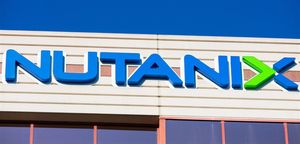
Welding equipment manufacturer Lincoln Electric (NASDAQ: LECO) beat Wall Street’s revenue expectations in Q4 CY2024, but sales fell by 3.4% year on year to $1.02 billion. Its non-GAAP profit of $2.57 per share was 28.9% above analysts’ consensus estimates.
Is now the time to buy Lincoln Electric? Find out by accessing our full research report, it’s free.
Lincoln Electric (LECO) Q4 CY2024 Highlights:
- Revenue: $1.02 billion vs analyst estimates of $996.9 million (3.4% year-on-year decline, 2.5% beat)
- Adjusted EPS: $2.57 vs analyst estimates of $1.99 (28.9% beat)
- Adjusted EBITDA: $200.2 million vs analyst estimates of $183.7 million (19.6% margin, 9% beat)
- Operating Margin: 17.3%, down from 19.3% in the same quarter last year
- Free Cash Flow Margin: 6.3%, down from 11.1% in the same quarter last year
- Organic Revenue fell 7.5% year on year (2.6% in the same quarter last year)
- Market Capitalization: $10.95 billion
“We are pleased with fourth quarter and full year operating profit margin and earnings performance despite challenging industrial sector demand as diligent price/cost management, strong execution of our cost saving actions and operational improvements advanced performance towards our 2025 Higher Standard Strategy goals,” stated Steven B. Hedlund, Chair, President and Chief Executive Officer.
Company Overview
Headquartered in Ohio, Lincoln Electric (NASDAQ: LECO) manufactures and sells welding equipment for various industries.
Professional Tools and Equipment
Automation that increases efficiency and connected equipment that collects analyzable data have been trending, creating new demand. Some professional tools and equipment companies also provide software to accompany measurement or automated machinery, adding a stream of recurring revenues to their businesses. On the other hand, professional tools and equipment companies are at the whim of economic cycles. Consumer spending and interest rates, for example, can greatly impact the industrial production that drives demand for these companies’ offerings.
Sales Growth
A company’s long-term performance is an indicator of its overall quality. While any business can experience short-term success, top-performing ones enjoy sustained growth for years. Regrettably, Lincoln Electric’s sales grew at a tepid 5.9% compounded annual growth rate over the last five years. This was below our standard for the industrials sector and is a tough starting point for our analysis.
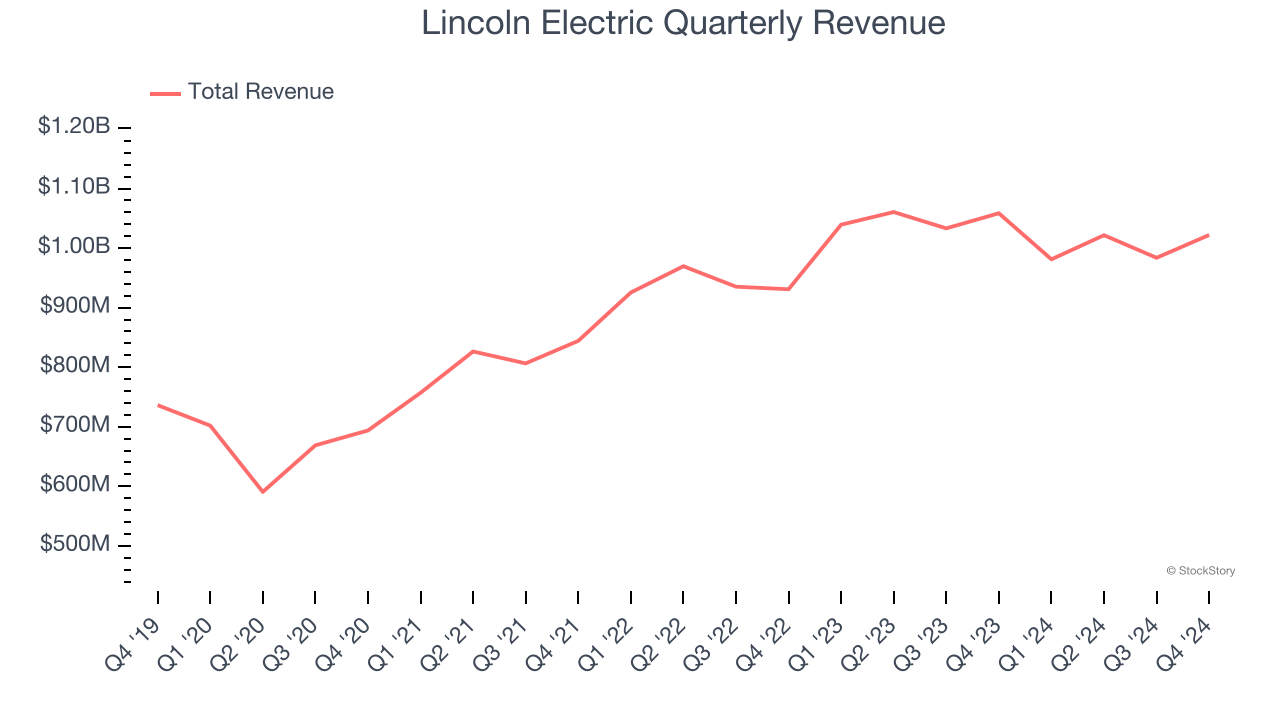
Long-term growth is the most important, but within industrials, a half-decade historical view may miss new industry trends or demand cycles. Lincoln Electric’s recent history shows its demand slowed as its annualized revenue growth of 3.2% over the last two years is below its five-year trend. 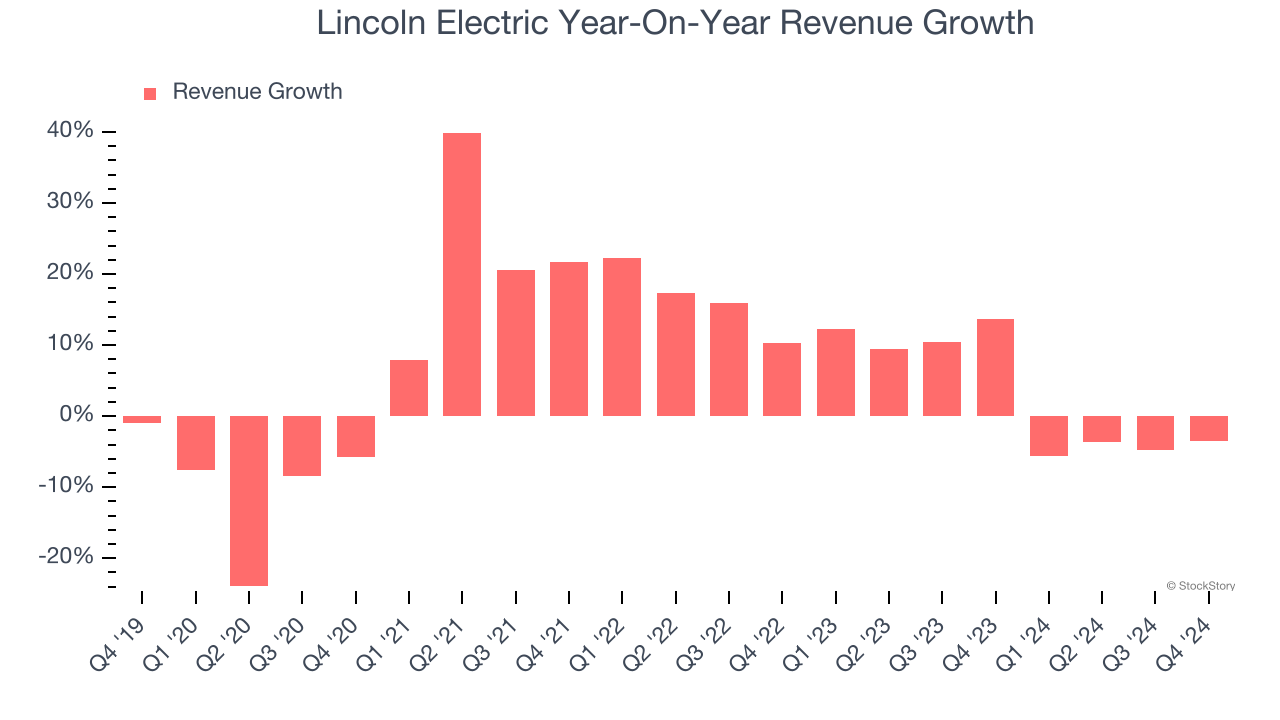
Lincoln Electric also reports organic revenue, which strips out one-time events like acquisitions and currency fluctuations that don’t accurately reflect its fundamentals. Over the last two years, Lincoln Electric’s organic revenue averaged 1.2% year-on-year declines. Because this number is lower than its normal revenue growth, we can see that some mixture of acquisitions and foreign exchange rates boosted its headline results. 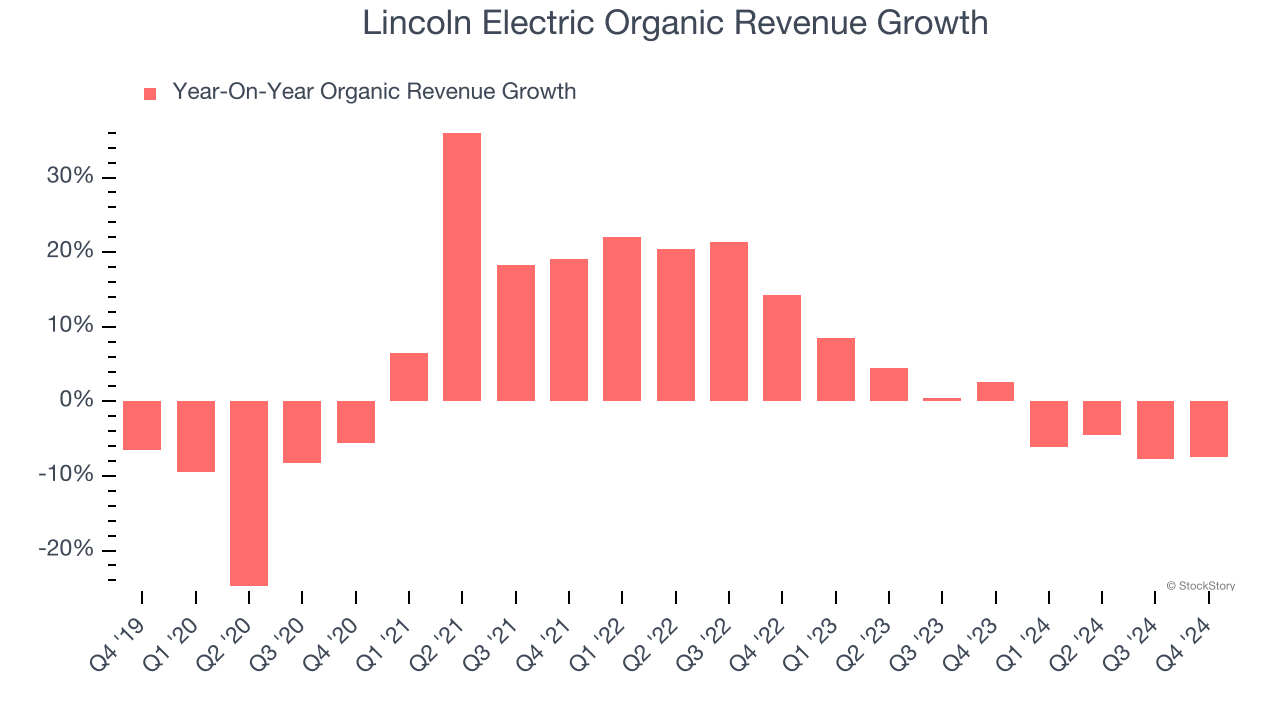
This quarter, Lincoln Electric’s revenue fell by 3.4% year on year to $1.02 billion but beat Wall Street’s estimates by 2.5%.
Looking ahead, sell-side analysts expect revenue to grow 2.9% over the next 12 months, similar to its two-year rate. This projection doesn't excite us and suggests its newer products and services will not accelerate its top-line performance yet.
Unless you’ve been living under a rock, it should be obvious by now that generative AI is going to have a huge impact on how large corporations do business. While Nvidia and AMD are trading close to all-time highs, we prefer a lesser-known (but still profitable) stock benefiting from the rise of AI. Click here to access our free report one of our favorites growth stories.
Operating Margin
Operating margin is an important measure of profitability as it shows the portion of revenue left after accounting for all core expenses – everything from the cost of goods sold to advertising and wages. It’s also useful for comparing profitability across companies with different levels of debt and tax rates because it excludes interest and taxes.
Lincoln Electric has been an efficient company over the last five years. It was one of the more profitable businesses in the industrials sector, boasting an average operating margin of 15.2%. This result isn’t too surprising as its gross margin gives it a favorable starting point.
Analyzing the trend in its profitability, Lincoln Electric’s operating margin rose by 5.3 percentage points over the last five years, showing its efficiency has meaningfully improved.
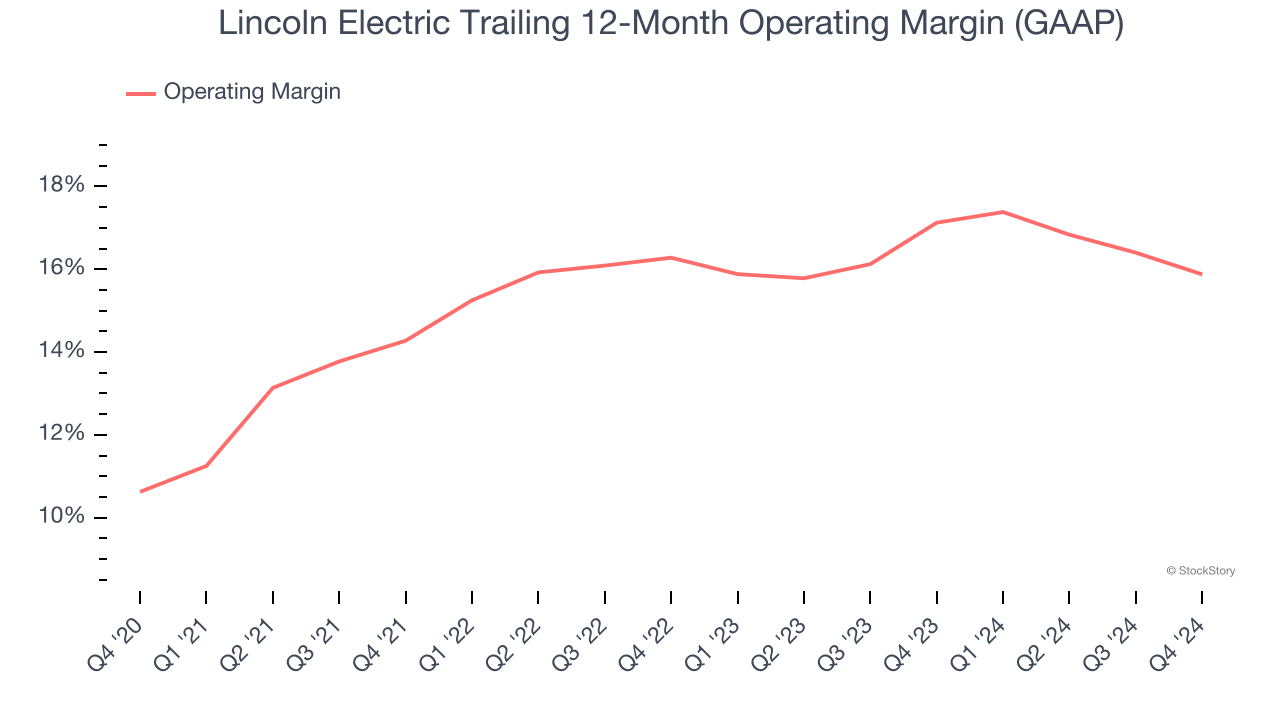
This quarter, Lincoln Electric generated an operating profit margin of 17.3%, down 2 percentage points year on year. Conversely, its gross margin actually rose, so we can assume its recent inefficiencies were driven by increased operating expenses like marketing, R&D, and administrative overhead.
Earnings Per Share
Revenue trends explain a company’s historical growth, but the long-term change in earnings per share (EPS) points to the profitability of that growth – for example, a company could inflate its sales through excessive spending on advertising and promotions.
Lincoln Electric’s EPS grew at a remarkable 14.6% compounded annual growth rate over the last five years, higher than its 5.9% annualized revenue growth. This tells us the company became more profitable on a per-share basis as it expanded.
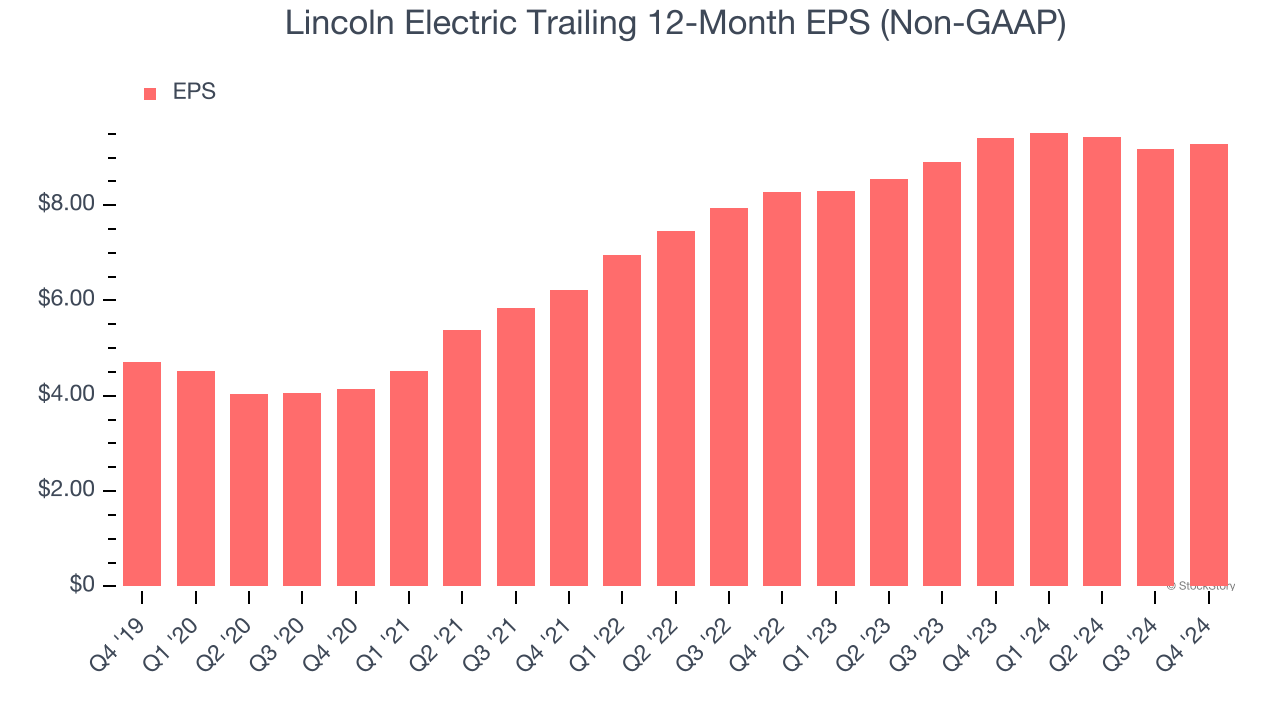
We can take a deeper look into Lincoln Electric’s earnings to better understand the drivers of its performance. As we mentioned earlier, Lincoln Electric’s operating margin declined this quarter but expanded by 5.3 percentage points over the last five years. Its share count also shrank by 7.9%, and these factors together are positive signs for shareholders because improving profitability and share buybacks turbocharge EPS growth relative to revenue growth. 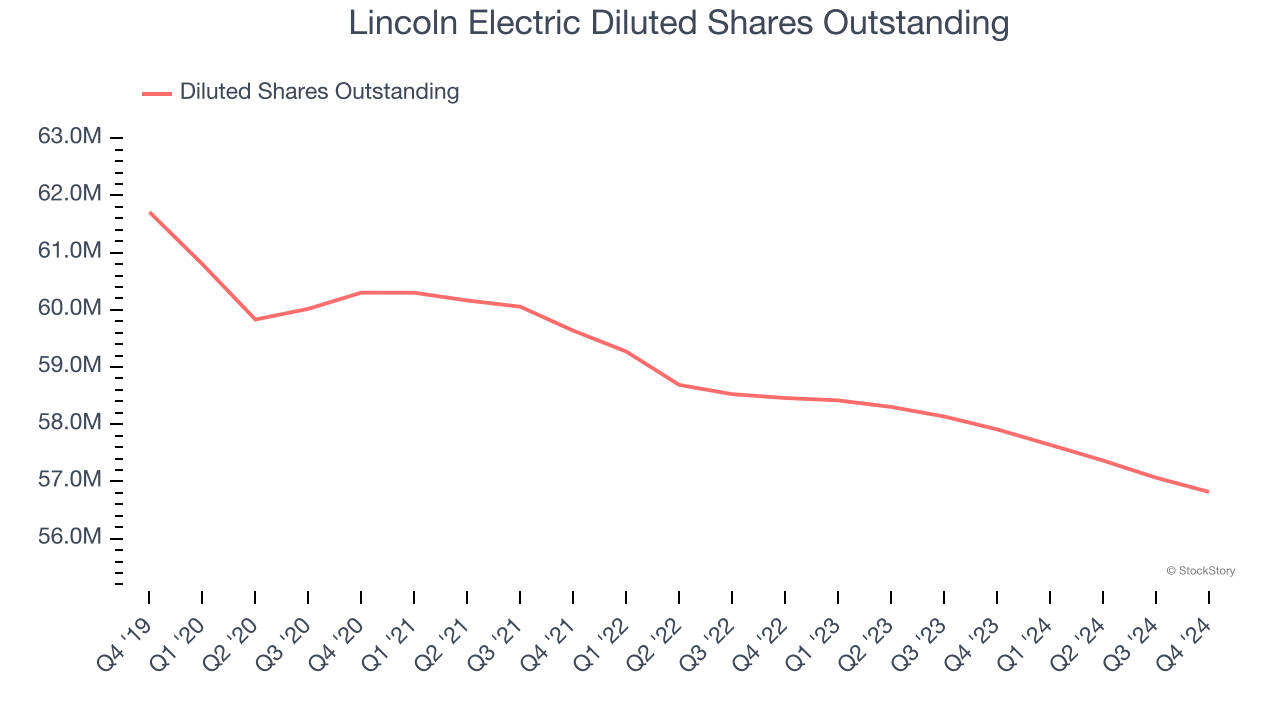
Like with revenue, we analyze EPS over a more recent period because it can provide insight into an emerging theme or development for the business.
For Lincoln Electric, its two-year annual EPS growth of 6% was lower than its five-year trend. We hope its growth can accelerate in the future.
In Q4, Lincoln Electric reported EPS at $2.57, up from $2.45 in the same quarter last year. This print easily cleared analysts’ estimates, and shareholders should be content with the results. Over the next 12 months, Wall Street expects Lincoln Electric’s full-year EPS of $9.29 to shrink by 1.8%.
Key Takeaways from Lincoln Electric’s Q4 Results
We were impressed by how significantly Lincoln Electric blew past analysts’ EPS expectations this quarter. We were also excited its revenue and EBITDA outperformed Wall Street’s estimates. Zooming out, we think this was a good quarter with some key areas of upside. The stock traded up 5% to $204 immediately following the results.
Lincoln Electric may have had a good quarter, but does that mean you should invest right now? What happened in the latest quarter matters, but not as much as longer-term business quality and valuation, when deciding whether to invest in this stock. We cover that in our actionable full research report which you can read here, it’s free.



